Navigating the dynamic landscape of cryptocurrency investments can be challenging, but identifying promising opportunities is key to maximizing returns. This article explores the 10 best crypto investment opportunities in 2025, offering insights into high-potential cryptocurrencies poised for significant growth. We delve into the factors influencing their value, examining market trends, technological advancements, and adoption rates to provide you with a comprehensive analysis of the best cryptocurrencies to invest in for the coming year. Prepare to unlock the potential of the top crypto investments with our expert analysis and predictions for successful crypto trading in 2025.
Bitcoin (BTC) for Long-Term Stability
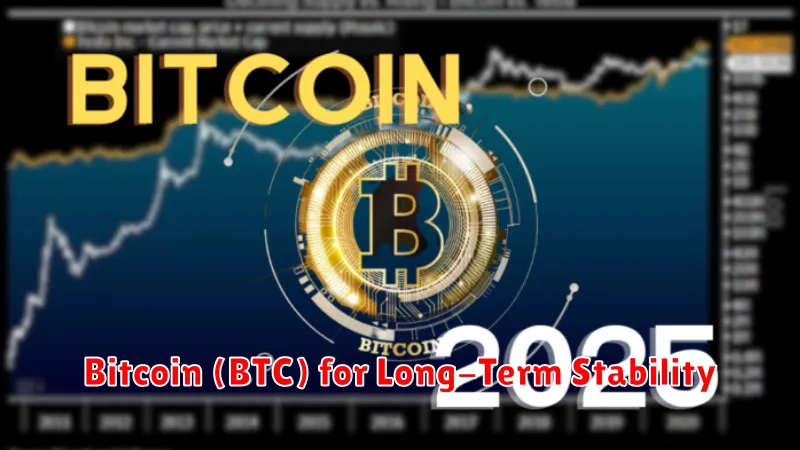
Bitcoin, the original cryptocurrency, offers a compelling case for long-term stability within the volatile cryptocurrency market. Its decentralized nature and limited supply of 21 million coins are key factors contributing to this potential. The scarcity inherent in Bitcoin’s design acts as a natural inflation hedge, potentially increasing its value over time.
While volatility remains a characteristic of Bitcoin, its established track record and widespread adoption suggest a degree of resilience. Its growing institutional acceptance and increasing use in financial applications further solidify its position as a potential long-term store of value.
However, it’s crucial to acknowledge that risks remain. Regulatory uncertainty and the ever-evolving cryptocurrency landscape pose potential challenges. Therefore, thorough research and a well-defined risk management strategy are essential before investing in Bitcoin for the long term.
Despite these risks, Bitcoin’s first-mover advantage and its growing role in the global financial system position it as a potentially strong contender for long-term investment portfolio diversification. The potential for substantial returns, balanced against a thorough understanding of the associated risks, makes Bitcoin a notable option for investors seeking long-term stability within the crypto market.
Ethereum (ETH) for Smart Contracts
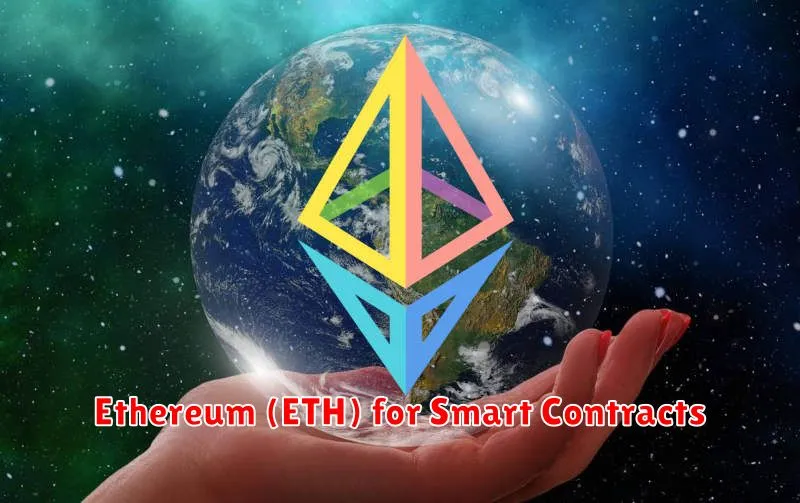
Ethereum’s blockchain technology underpins its success as a leading platform for smart contracts. These self-executing contracts automate agreements, eliminating intermediaries and increasing efficiency and trust.
Smart contracts on Ethereum are written in Solidity, a programming language specifically designed for the platform. This allows developers to create a wide range of decentralized applications (dApps), from decentralized finance (DeFi) protocols to supply chain management systems.
The decentralized nature of Ethereum ensures transparency and security, minimizing the risk of single points of failure or manipulation. This makes it an attractive option for businesses and individuals seeking secure and reliable execution of agreements.
While gas fees can be a factor, ongoing improvements to the Ethereum network, such as the transition to Ethereum 2.0, aim to address scalability and cost concerns, further solidifying its position in the smart contract landscape. Investment in Ethereum, therefore, represents a bet on the continued growth and adoption of smart contract technology.
Polkadot (DOT) for Cross-Chain Solutions
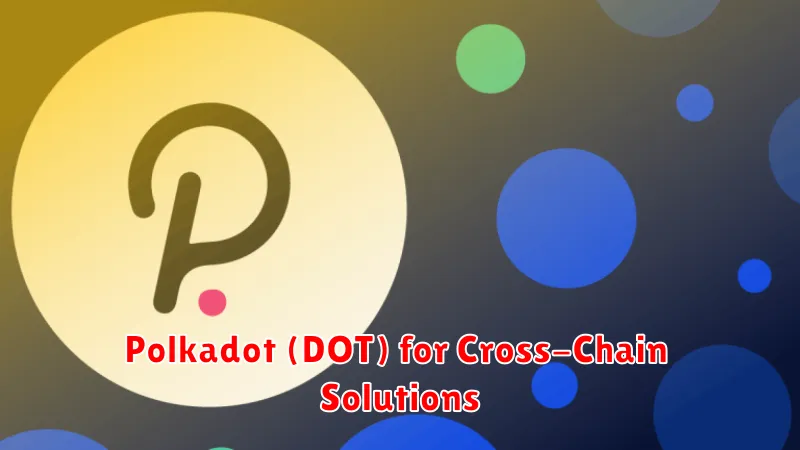
Polkadot (DOT) is a promising cryptocurrency for 2025 due to its innovative approach to cross-chain interoperability. Its unique architecture allows different blockchains to communicate and exchange information seamlessly.
This cross-chain functionality solves a major hurdle in the blockchain space – the inability of separate networks to interact efficiently. Polkadot’s relay chain acts as a central hub, connecting various parachains (independent blockchains) and enabling interoperability.
This feature is particularly attractive for investors as it facilitates the creation of a more unified and interconnected cryptocurrency ecosystem. The potential for increased efficiency, scalability, and new applications built upon this interoperability makes Polkadot a strong contender for future growth.
Investing in Polkadot offers exposure to this rapidly developing technology. However, as with any cryptocurrency, risks remain, including market volatility and technological uncertainties. Thorough research and a diversified investment strategy are crucial.
Solana (SOL) for High-Speed Transactions
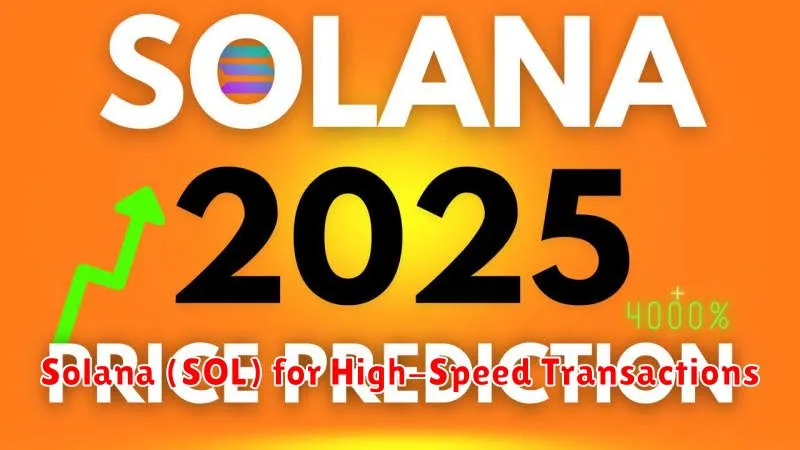
Solana’s key strength lies in its ability to process transactions at incredibly high speeds. Unlike many other blockchains that struggle with scalability, Solana utilizes a unique hybrid consensus mechanism combining Proof-of-Stake (PoS) and a novel clock synchronization mechanism called Proof-of-History (PoH). This allows for significantly faster transaction finality and higher throughput.
This high speed makes Solana well-suited for applications requiring near-instantaneous transactions, such as decentralized finance (DeFi) applications, non-fungible token (NFT) marketplaces, and gaming platforms. The potential for low latency transactions is a major draw for developers and users alike, fostering innovation within the Solana ecosystem.
While scalability remains a challenge across the cryptocurrency landscape, Solana’s innovative approach positions it as a strong contender for those seeking a high-performance blockchain platform. However, it’s important to note that the technology is relatively new and its long-term viability remains subject to ongoing development and market conditions.
Avalanche (AVAX) for Decentralized Finance

Avalanche (AVAX) is a prominent platform for decentralized finance (DeFi) applications, offering high throughput and low transaction fees. Its unique architecture, employing a novel consensus mechanism, allows for rapid finality and scalability, crucial aspects for DeFi applications requiring speed and efficiency.
AVAX serves as the native token of the Avalanche ecosystem, facilitating various activities within the network, including staking, transaction fees, and governance. Its deflationary nature, coupled with increasing adoption of DeFi applications on Avalanche, positions it as a potentially strong investment.
The platform boasts a vibrant DeFi ecosystem with a variety of applications, including decentralized exchanges (DEXs), lending and borrowing protocols, and yield farming opportunities. This robust ecosystem creates network effects, enhancing the value proposition for both users and investors.
However, like any cryptocurrency, AVAX carries inherent risks. Market volatility, technological advancements, and regulatory uncertainties all pose challenges. Potential investors should conduct thorough research and carefully assess their risk tolerance before investing in AVAX or any cryptocurrency.
Cardano (ADA) for Eco-Friendly Blockchain
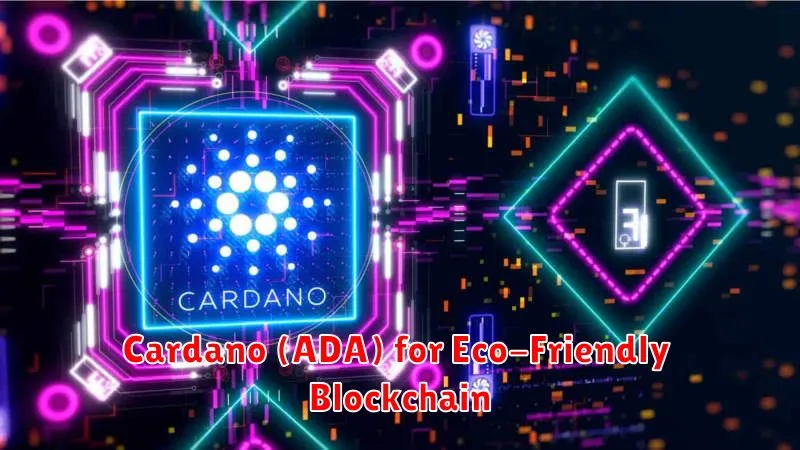
Cardano (ADA) stands out as a strong contender among eco-friendly blockchain platforms. Unlike some cryptocurrencies that rely on energy-intensive proof-of-work consensus mechanisms, Cardano utilizes a proof-of-stake (PoS) system. This significantly reduces its environmental impact by requiring considerably less energy for transaction validation.
The PoS algorithm allows ADA holders to validate transactions and earn rewards, making it a more sustainable and environmentally responsible alternative. Cardano’s commitment to sustainability is further reinforced by its focus on peer-reviewed research and development, ensuring the long-term viability and efficiency of its blockchain network.
This environmentally conscious approach, combined with its robust technology and growing adoption, positions Cardano as an attractive investment opportunity for those seeking both financial returns and socially responsible investments in the cryptocurrency space.
Polygon (MATIC) for Scalability
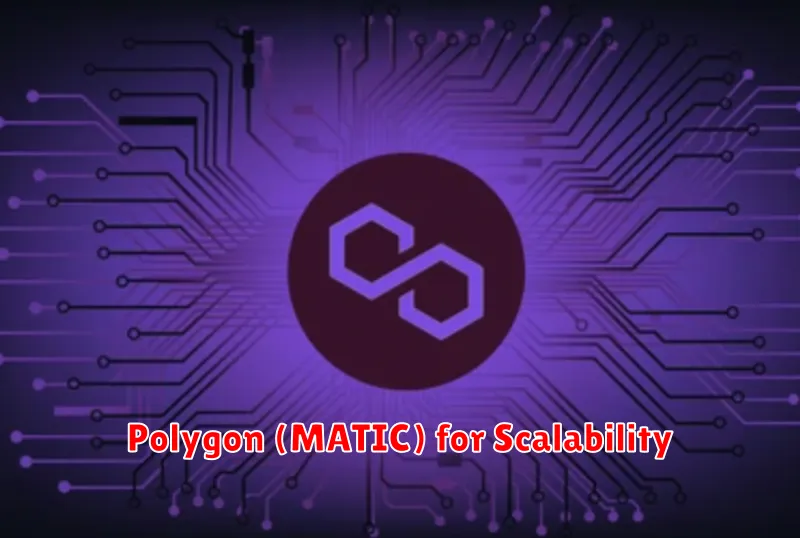
Polygon (MATIC) is a Layer-2 scaling solution for Ethereum, addressing a critical challenge in the crypto space: scalability. Ethereum’s popularity often leads to network congestion and high transaction fees. Polygon alleviates this by providing a framework for building and connecting various scaling solutions, including Plasma, Optimistic Rollups, and zkRollups.
This scalability translates to faster transaction speeds and significantly lower costs for users. The network’s ability to handle a higher volume of transactions makes it attractive for decentralized applications (dApps) seeking to avoid the limitations of the main Ethereum network.
Polygon’s growing ecosystem and integration with Ethereum’s robust infrastructure are key factors driving its potential for future growth. The ease of development and deployment on Polygon makes it a preferred choice for developers, contributing to its strong adoption rate.
While there are inherent risks involved in any cryptocurrency investment, Polygon’s focus on scalability within the Ethereum ecosystem positions it as a promising contender in the 2025 investment landscape.
Chainlink (LINK) for Oracle Solutions
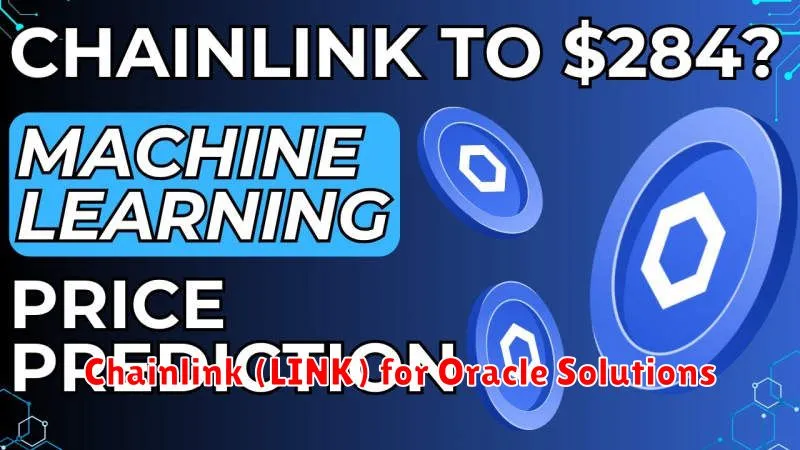
Chainlink (LINK) stands out as a top crypto investment opportunity for 2025 due to its crucial role in providing secure and reliable oracle solutions for blockchain networks. Its decentralized oracle network bridges the gap between on-chain and off-chain data, enabling smart contracts to access real-world information.
This functionality is vital for numerous applications, from decentralized finance (DeFi) and supply chain management to gaming and IoT. As blockchain technology adoption increases, the demand for dependable oracles like Chainlink will surge, potentially driving significant growth in the value of LINK tokens.
Key advantages of Chainlink include its established ecosystem, robust security protocols, and a growing network of data providers. This makes it a strong contender among blockchain infrastructure projects poised for substantial future growth. While inherent risks exist in cryptocurrency investments, Chainlink’s established position and critical function contribute to its appeal as a potentially lucrative investment in 2025.
Hedera (HBAR) for Enterprise Use
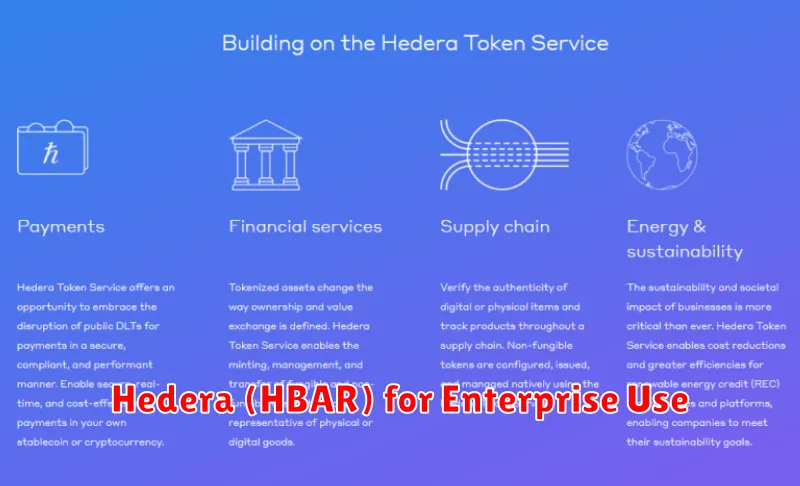
Hedera Hashgraph’s distributed ledger technology (DLT) offers a compelling solution for enterprise applications seeking speed, security, and scalability. Unlike blockchain, Hedera utilizes a hashgraph consensus mechanism, resulting in significantly faster transaction speeds and lower energy consumption. This makes it ideal for various enterprise use cases.
High throughput is a key advantage. Hedera’s architecture can handle thousands of transactions per second, crucial for applications requiring real-time processing such as supply chain management and financial transactions. Its decentralized governance model ensures fairness and transparency, bolstering trust among participating enterprises.
The platform supports the development of decentralized applications (dApps) and smart contracts, enabling businesses to build secure and efficient solutions. Moreover, Hedera’s focus on enterprise-grade security and regulatory compliance makes it an attractive option for businesses operating in highly regulated industries.
Interoperability is another notable feature. Hedera is designed to work seamlessly with existing systems, making integration into existing enterprise infrastructures smoother. This facilitates easier adoption and reduces integration complexities.
Overall, Hedera’s speed, security, scalability, and enterprise-focused features make it a strong contender for businesses looking to leverage blockchain technology for various applications. The potential for growth in enterprise adoption makes HBAR a potentially attractive investment.
Litecoin (LTC) for Fast Transactions
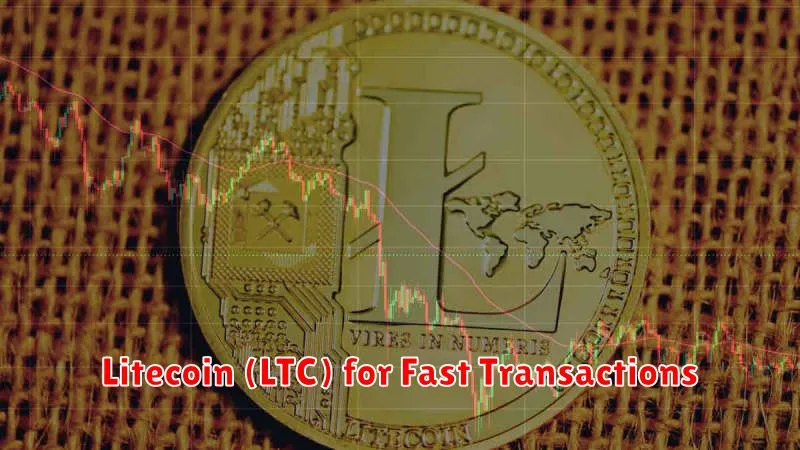
Litecoin (LTC) offers a compelling investment opportunity in 2025 due to its focus on fast and efficient transactions. Unlike Bitcoin, Litecoin boasts a significantly shorter block generation time, resulting in quicker confirmation times for payments. This makes it a strong contender for everyday use cases where speed is paramount.
The cryptocurrency’s scalability is another key factor. Its underlying technology is designed to handle a higher transaction volume compared to some other cryptocurrencies, further enhancing its suitability for widespread adoption. This increased efficiency translates to lower transaction fees, making it a cost-effective solution for users.
While future price predictions remain speculative, Litecoin’s established presence in the crypto market, combined with its technological advantages in processing speed and lower fees, positions it as a potentially lucrative investment for those seeking both growth and utility in the digital asset space.
